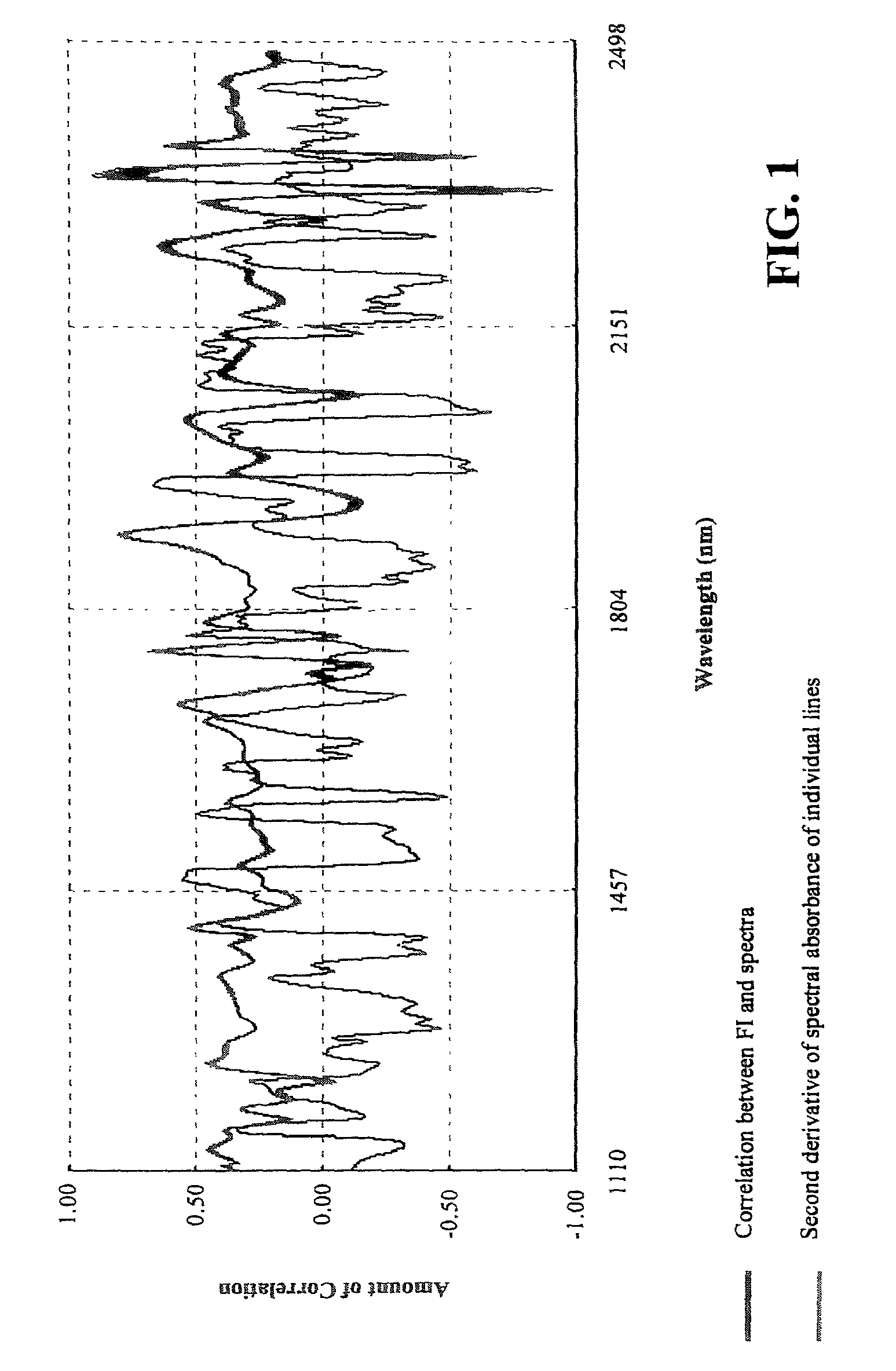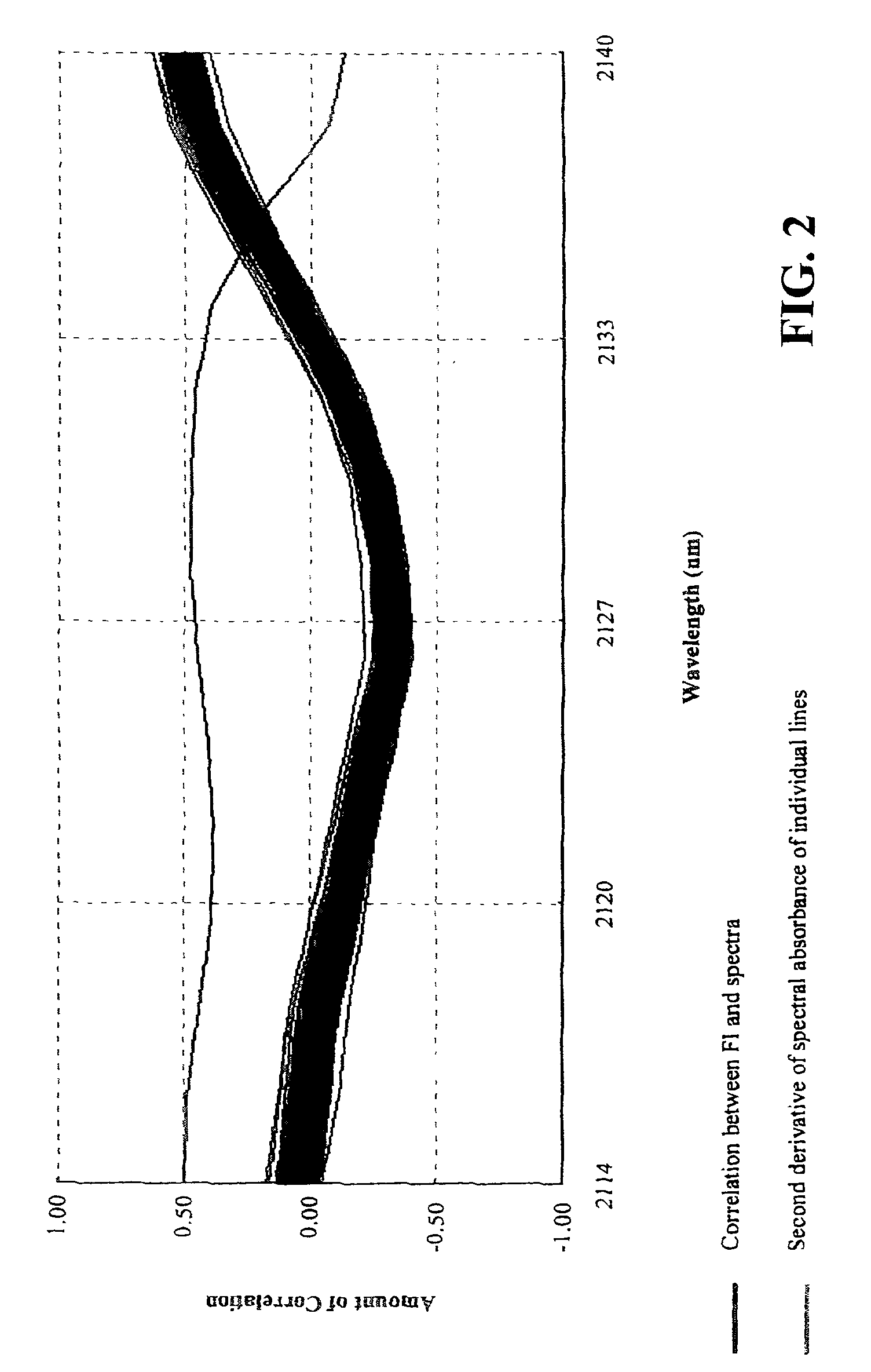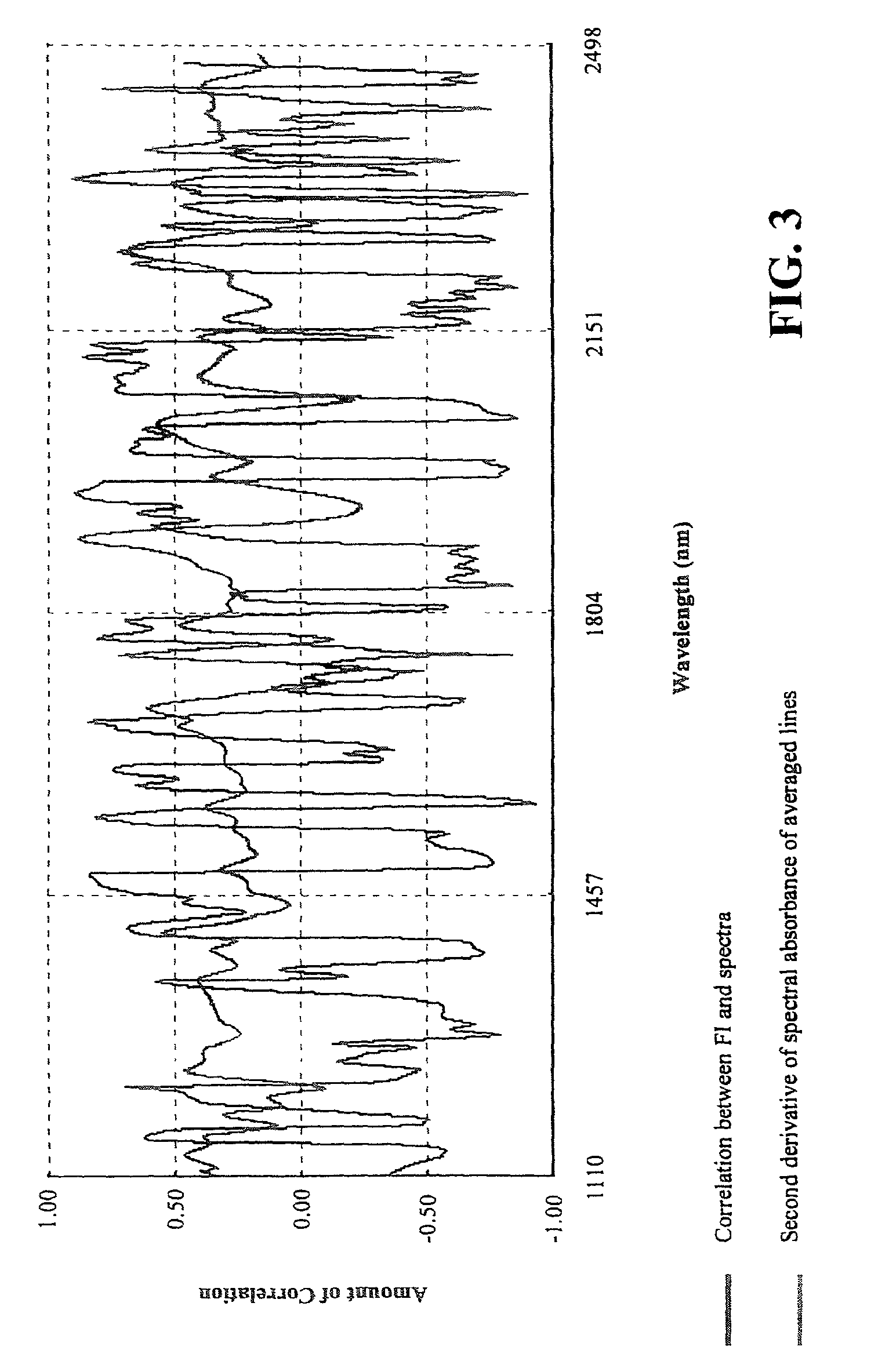Method and apparatus for predicting soybean seed resistance based on near-infrared spectroscopy
a technology of near-infrared spectroscopy and soybean seed, which is applied in the field of comparing genotypes of biological tissue samples, can solve the problems of high toxic to mammals of nematicides such as aldicarb® and its breakdown products, and substantial losses to all crops
- Summary
- Abstract
- Description
- Claims
- Application Information
AI Technical Summary
Benefits of technology
Problems solved by technology
Method used
Image
Examples
example 1
Preparation of Plant Materials
[0047]Plant Materials:
[0048]Two-hundred fifteen experimental soybean cultivars were selected from the University of Missouri's soybean breeding program. These cultivars were selected in the F4:5&6 generations from preliminary yield trials grown in 1999. The cultivars were divided into three groups based on their pedigrees. Seventy-eight experimental cultivars resulted from crosses between two SCN resistant parents and were grouped together. Eighty-two experimental cultivars resulted from crosses between one SCN resistant and one SCN susceptible parent and were grouped together. The final 55 experimental cultivars resulted from crosses between two SCN susceptible parents and were grouped together. Seed quality of these cultivars was generally poor as many seeds were infested with purple seed stain (Cercospora kikuchii) as well as phomopsis seed decay (Phomopsis longicolla Hobbs). Five hundred seeds were visually selected from each cultivar to ensure ...
example 2
Preparation and Analysis of Tissue Samples
[0065]NIR Sample Preparation and Analysis:
[0066]Dried plant tissue samples were ground to pass through a 1-mm screen using a cyclone type grinder. Ground samples were then placed into clear, sealable plastic bags and returned to the freezer (−20° C.) to await spectral analysis. Approximately 7 g of ground plant tissue were used for NIR analysis. Tissue samples were analyzed using a Foss NIR Systems Model 6500 (Foss NIR Systems, Silver Spring, Md., USA). The instrument scanned each sample with radiation from 400 to 2498 nm in wavelength and log 1 / reflectance (Log 1 / R) was recorded at 2 nm intervals. Spectral data were trimmed to include just the near infrared portion of the spectrum, which ranges from 1100 to 2498 nm, to remove variations due to different tissue color.
[0067]Data Analysis:
[0068]Cysts collected from entries that were inoculated with SCN were counted and female index (FI) (formerly called index of parasitism) was calculated acco...
PUM
| Property | Measurement | Unit |
|---|---|---|
| Electrical resistance | aaaaa | aaaaa |
| Time | aaaaa | aaaaa |
| Angular velocity | aaaaa | aaaaa |
Abstract
Description
Claims
Application Information
 Login to View More
Login to View More - R&D Engineer
- R&D Manager
- IP Professional
- Industry Leading Data Capabilities
- Powerful AI technology
- Patent DNA Extraction
Browse by: Latest US Patents, China's latest patents, Technical Efficacy Thesaurus, Application Domain, Technology Topic, Popular Technical Reports.
© 2024 PatSnap. All rights reserved.Legal|Privacy policy|Modern Slavery Act Transparency Statement|Sitemap|About US| Contact US: help@patsnap.com










